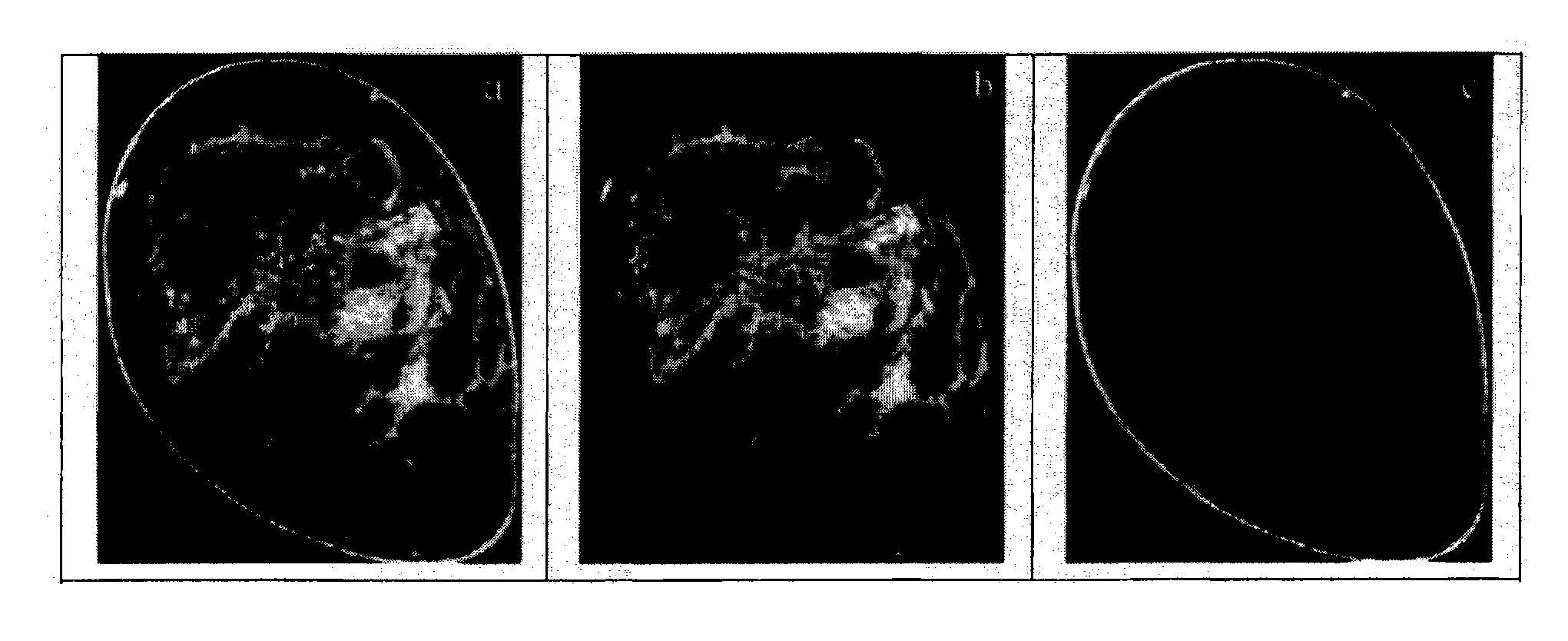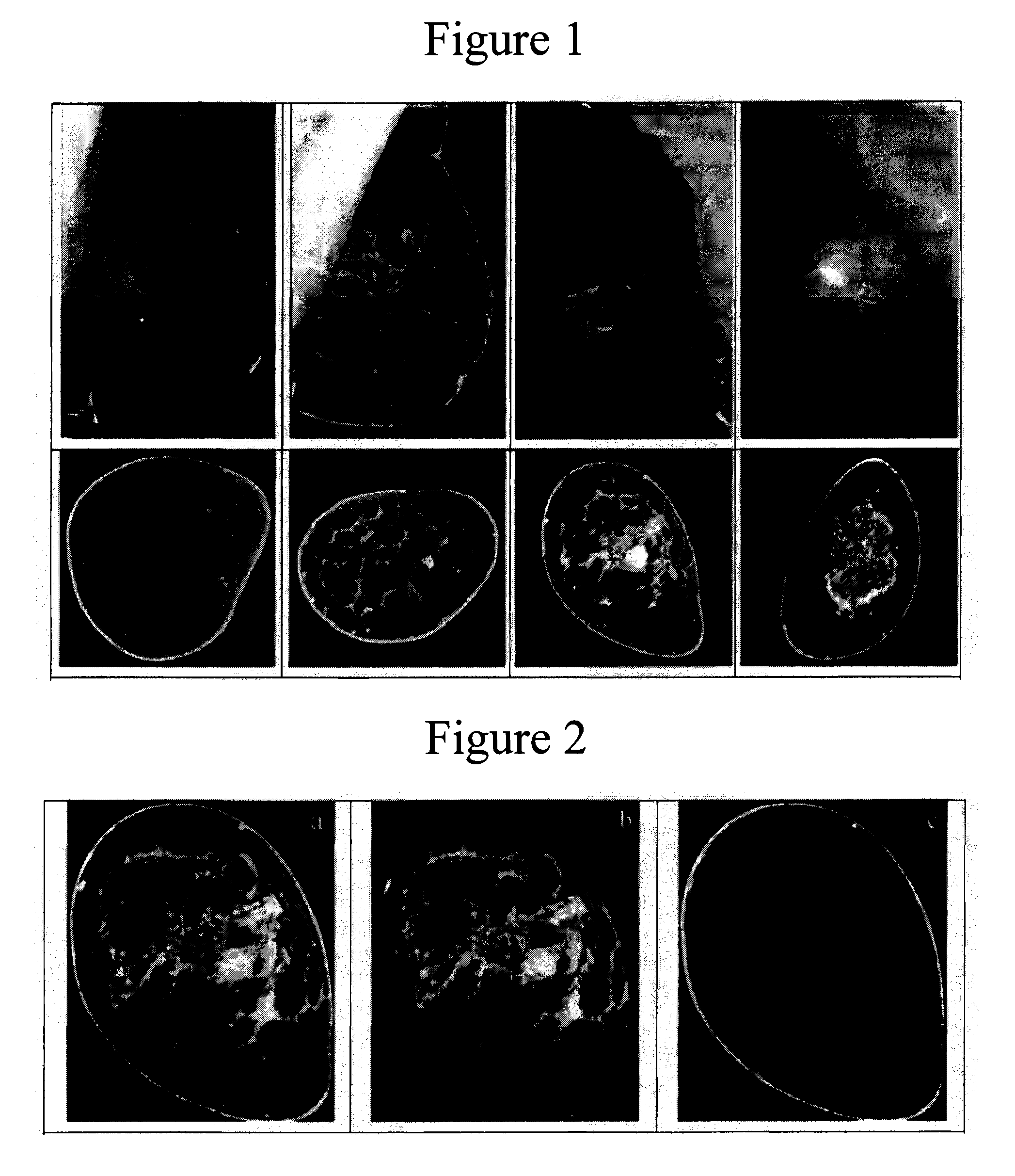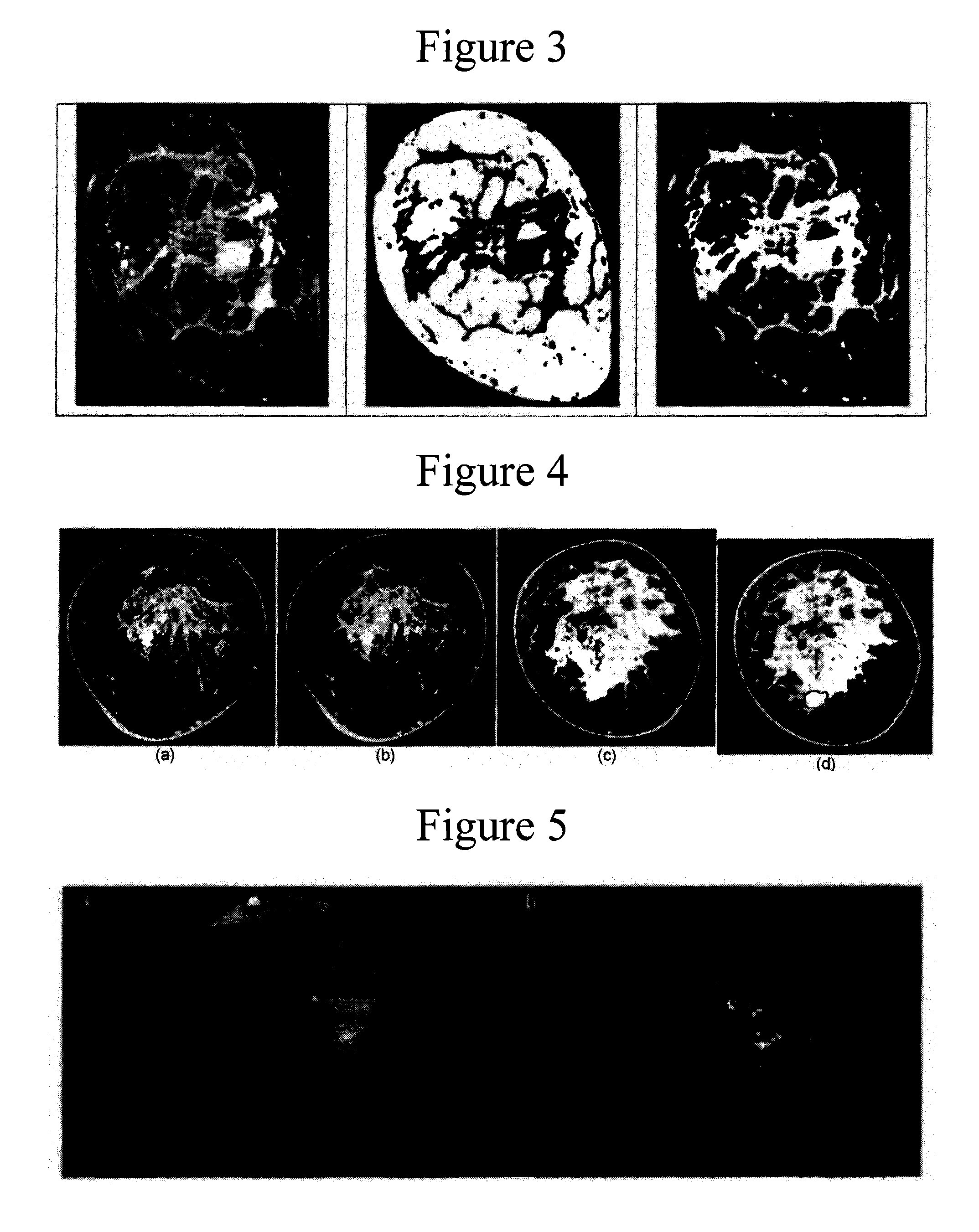Method and apparatus for cone beam breast CT image-based computer-aided detection and diagnosis
a technology of computer-aided detection and diagnosis, applied in the field of breast imaging, can solve the problems of insufficient limited spatial resolution of bmri, and inability to achieve significant improvement of ct applied to mammograms, etc., and achieve no tissue overlap, superior soft tissue contrast, and high contrast resolution
- Summary
- Abstract
- Description
- Claims
- Application Information
AI Technical Summary
Benefits of technology
Problems solved by technology
Method used
Image
Examples
Embodiment Construction
[0060]A preferred embodiment will be set forth in detail with reference to the drawings, in which like reference numerals refer to like elements or steps throughout.
[0061]The first step is skin removal. Although the skin in CBBCT images has higher intensity than the fatty stroma, its intensity is only slightly higher than that of the glandular tissue. A simple thresholding cannot segment the skin from other tissue. Based on the fact that the skin is on the outermost layer of the whole breast, a morphological process is proposed to remove the skin from the breast in CBBCT images.
[0062]1. A histogram thresholding method is applied to the whole CBBCT image volume to separate the image into three distinct parts which have significant different intensities: air, fat and tissues (including skin and glands).
[0063]2. Based on the fact that the skin is between the inner breast and the air, a morphological 3D erosion operation is applied to erode the tissue between air and fat.
[0064]3. When t...
PUM
 Login to View More
Login to View More Abstract
Description
Claims
Application Information
 Login to View More
Login to View More - R&D
- Intellectual Property
- Life Sciences
- Materials
- Tech Scout
- Unparalleled Data Quality
- Higher Quality Content
- 60% Fewer Hallucinations
Browse by: Latest US Patents, China's latest patents, Technical Efficacy Thesaurus, Application Domain, Technology Topic, Popular Technical Reports.
© 2025 PatSnap. All rights reserved.Legal|Privacy policy|Modern Slavery Act Transparency Statement|Sitemap|About US| Contact US: help@patsnap.com



